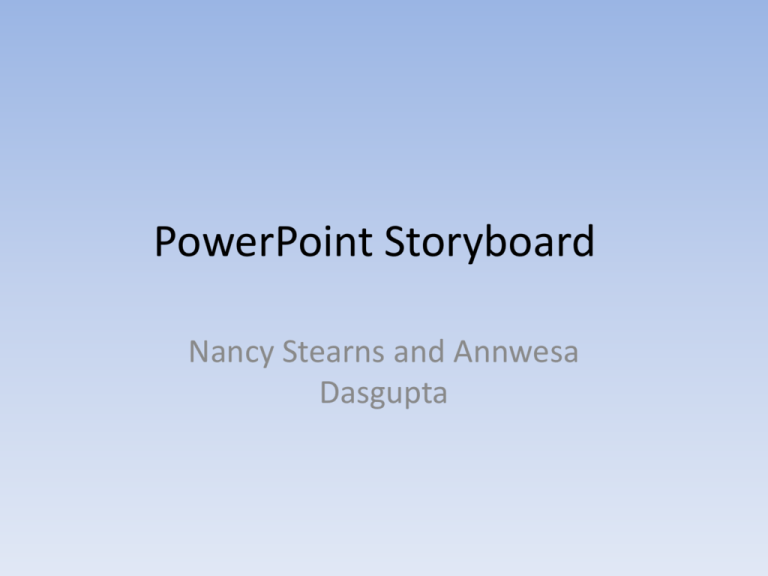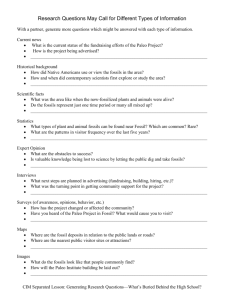Powerpoint Storyboard
advertisement

PowerPoint Storyboard Nancy Stearns and Annwesa Dasgupta Evidence of Ancient Life: Fossils • What are fossils? Naturally preserved remains or traces of animals or plants that lived in the geologic past. Fossils include the remains of organisms that were once living or can be the signs left behind by organisms like footprints, tracks, trails, and burrows. • What do we learn from them? The fossil record can tell a lot of evolution as it has occurred over the past million years. How are fossils formed? • In several ways: – Tiny air spaces in buried bone and shell can let water seep in and minerals are deposited as a result which reinforce the bone and shell. – Preserved in amber or ice tombs. – A sudden natural disaster can lead to fossilization of trapped living things. • Watch the videos to learn more about how fossils are formed: http://www.classzone.com/books/earth _science/terc/content/visualizations/es 2901/es2901page01.cfm?chapter_no=vi sualization http://www.pbs.org/wgbh/evolution/lib rary/04/3/quicktime/l_043_01.html http://www.pbs.org/wgbh/evolution/library/04/3/l_043_01.html The Fossil Records: Let’s do an activity to learn about the ‘The fossil bearing unit: The Burgess Shale’ http://www.ucmp.berkeley.edu/cambrian/burgess.html Teacher-lesson plan: http://www.discoveryeducation.com/teachers/free-lessonplans/the-fossil-record.cfm#que How can fossils show evolution? • Transitional fossils: Fossils or organisms that show the intermediate states between an ancestral form and that of its descendants are referred to as transitional forms. • Numerous examples of transitional forms in the fossil record, provide an abundance of evidence for change over time. • Example: Transitional fossils of whales -evolution from land to water. Source: Zimmer, C. (2006). Evolution: The Triumph of an Idea. New York, NY: HarperCollins. Whales in Transition: • Read the following material with a focus on ‘evidence’ that elaborates the fossil sequence from terrestrial mammals through more and more whale-like forms until the appearance of modern whales http://www.indiana.edu/~ensiweb/lessons/wh.or.11.pdf • Divide in groups of three and fill out the various characteristics that you come across as you read. After completing the worksheet, take a note of the various similarities and differences during the course of whale evolution http://www.indiana.edu/~ensiweb/lessons/wh.ev.dt.pdf Explore from the activity : Why aren’t there more of these transitional fossils? Why do gaps exists these fossil finds? http://www.indiana.edu/~ensiweb/lessons/whale.ev.html Discussion • Why are fossils so rare and difficult to find ancestral fossil species to show evolution from a common ancestor? • Any there any questions that fossil records might not be able to answer?





